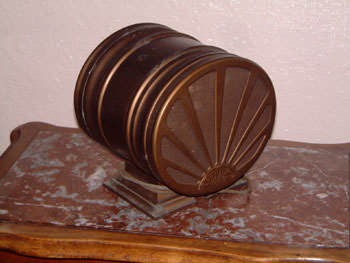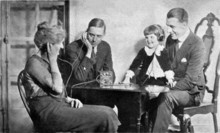Born in Canada in 1900, but raised in Kansas, Tiny Parham worked the “Territory Circuit”, but found his way to Chicago by 1925, where he first worked as a pianist and composer for hire, accompanying blues singers and soloists. Here he is with Johnny Dodds, playing one of Parham’s own tunes.
Unusual arrangements
He was a terrific accompanist, but as a band leader he produced some very unusual and quirky music, combining instruments in ways other jazz composers weren’t. Tuba and violin, anyone? Here’s his Voodoo:
Some commentators find similarities with Ellington’s work at the time, but I think there’s a closer affinity with Jelly Roll Morton, perhaps best heard in this side, although Tiny’s own piano break is quite unlike Morton’s style:
So, an affinity. But it’s by no means a Jelly Roll rip off.
Jazz connections
It’s easy to forget, as we concentrate on the Chicago scene, that jazz was not sitting still in isolation in the city, but was evolving elsewhere as well. Sometimes it is said that it was evolving independently in the other locations it had been seeded, but that’s not quite true either. Tunes and reputations were being disseminated by the Territory Circuit, but also by recordings.
Records
Record distribution in the US was remarkable in the 20s, and people even in difficult to reach communities had access to recorded music. So the urban centres were much more into the jazz craze. When Louis Armstrong went on tour, he was amazed to hear his records being played in black neighbourhoods all over the country, “We were popular all through the Towns we passed through – Toledo Ohio – Cleveland – Detroit – Buffalo”. (Louis Armstrong, in His Own Words: Selected Writings). He was surprised to find he was already well-known in towns he’d never before visited.
Radio
 |
| A 1924 Operadio set |
 |
| A family using a crystal set, 1922 |
The Mob
The Chicago music scene – like local government and law enforcement – was run by the Mob. Even venues not directly owned by gangsters such as Al Capone could not operate without their say. Parham worked in a club directly owned by Capone, in the Cicero area of the city.
Parham may have worked directly for Capone, but others couldn’t avoid indirectly working for the mob. Joe Glaser, who on paper owned the Sunset club, was described as “gangster connected”; in reality his club was controlled by Capone’s syndicate. Armstrong and Oliver worked at the Sunset, and Glaser was eventually to become Armstrong’s manager.
Turf wars
As the 20s progressed, turf war between the gangs became more and more heated, and musicians were getting caught in the crossfire. Often literally.
George Wettling, the drumming friend of Muggsy Spanier, remembered the intimidation and the guns of those times. “We would see those rods come up – and duck. At the Triangle Club, the boss was shot in the stomach one night, but we kept working”. (Shapiro and Hentoff, p130).
Jimmy McPartland recalled the North Side mob coming into the Friar’s Inn, which had Capone connections. “So it was late this night, and we were off the bandstand and sitting in the back, when all of a sudden – bang, boom, bang! Somebody was shooting a gun.
Mike Fritzl was the boss there, and Mike says, ‘Play, play, fellers.’ We weren’t all that keen, but the shooting had ceased so we got up on the stand to play, and there was the bass fiddle all shot to pieces”.(Shapiro & Hentoff, p132).
Death
Like many others, Tiny got out of Chicago at the end of the 20s. He toured throughout the 30s, and died in a dressing room in Milwaukee during a show in 1943.
Tiny on CD
Morton and Cook recommend the Classics issue, Tiny Parham and his Musicians, 1926 – 1929.
At the moment, that's a bit pricey for the casual collector (the French company with the famous typo on its covers, "Chronogical", went out of business, and some of its issues fetch higher prices than others).
The other alternative on the market was the 2008 release, "Tiny Parham", on the Timeless label, remastered by the late John R.T. Davies, but currently has an asking price of more than £100. You'd need to really want it for that (it's a single CD, not a boxed set!).
So to hear Tiny, but not his Orchestra, you might want to consider Tiny Parham & the Blues Singers "Complete Recorded Works" (ie, as an accompanist) on the Document label. This collection has three tracks with Johnny Dodds, including 19th Street Blues, heard above.


No comments:
Post a Comment